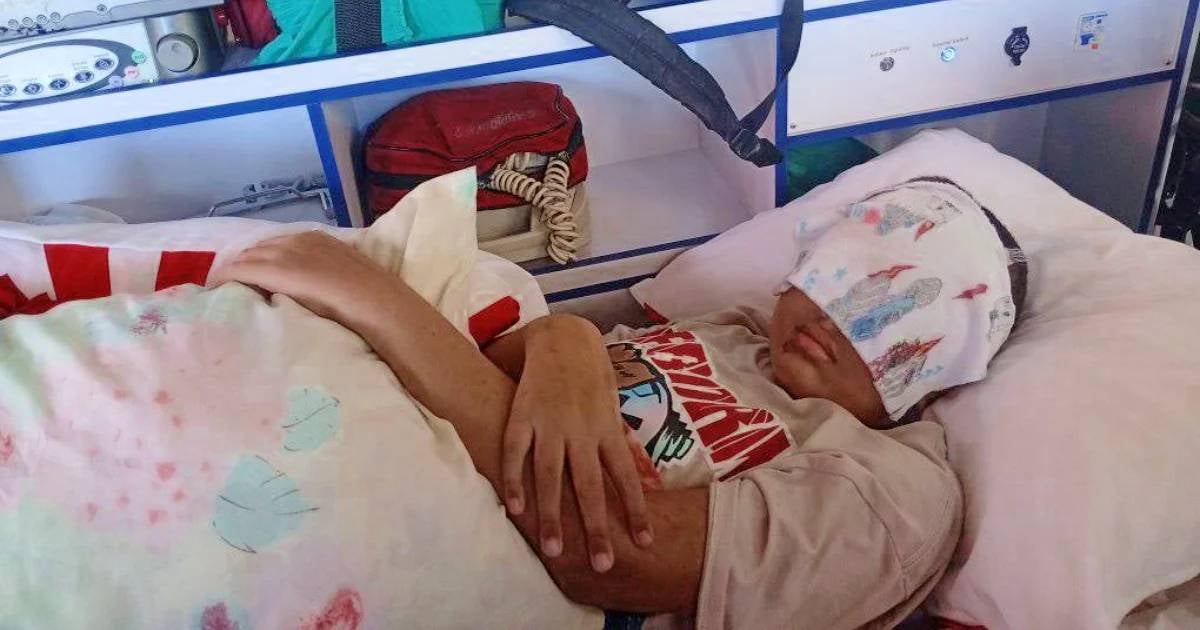On Monday, activist Idelisa Diasniurka Salcedo Verdecia voiced her concerns regarding the chemotherapy administered to young Damir Ortiz in Cuba, claiming it not only was the wrong course of action but also severely harmed his health. Through a post on Facebook, Salcedo criticized the medical decision, stating, “My heart was never wrong,” and emphasized her repeated warnings about the unsuitability of this treatment.
The post, which includes a screenshot of a conversation with Eliannis Ramírez, Damir's mother, revealed that an inaccurate diagnosis led to chemotherapy that worsened the child's condition rather than improving it. Salcedo, who maintains direct communication with Eliannis, expressed, “I felt it wasn’t right. But they insisted otherwise, and the chemotherapy that should have helped only did harm.” Despite these setbacks, she noted that Damir is on a slow and challenging path to recovery due to the state he was in when he arrived.
Salcedo's efforts were crucial in facilitating Damir's transfer from Cuba to the United States, where he is now receiving high-quality medical care that has been pivotal in saving his life. This denunciation highlights what Salcedo terms as “medical impotence” in Cuba and underscores the urgent need to reevaluate diagnostic and treatment protocols to prevent similar outcomes for other patients. Meanwhile, Damir’s family and supporters remain hopeful that despite the setbacks, his health will continue to improve significantly.
Current Status of Damir
Damir Ortiz is currently showing promising progress at Nicklaus Children's Hospital in Miami. On Saturday, reports emerged that doctors identified and treated a new bacterial infection, with his lungs demonstrating signs of improvement.
It was later revealed that the 10-year-old does not have leukemia, as previously diagnosed at the Institute of Neurology and Neurosurgery in Havana in February. According to his mother, Eliannis Ramírez, further tests conclusively ruled out the Burkitt leukemia diagnosis.
Damir is afflicted with neurofibromatosis type 1, a condition that has resulted in a plexiform neurofibroma in his right eye, impairing his vision and causing severe ocular inflammation. He has also faced additional complications, such as kidney damage and a significant drop in platelets and hemoglobin, leading to bleeding and requiring transfusions.
Damir's journey has been marked by a relentless battle to secure the medical care he desperately needed. Thanks to the efforts of activists like Salcedo, Aylín Díaz, and Dr. Miguel Ángel Ruano, Damir was airlifted from a hospital in Havana—where his health was declining without adequate solutions—to Miami. The family and their support team overcame numerous bureaucratic and financial obstacles to obtain humanitarian visas for Damir and his mother, as well as the necessary permissions for their evacuation.
Given the severity of Damir's condition, a commercial flight was not feasible, necessitating the charter of a medically equipped aircraft. Thousands of Cubans rallied to support this cause at every step.
Frequently Asked Questions About Damir's Medical Journey
What was the incorrect diagnosis given to Damir in Cuba?
In Cuba, Damir was incorrectly diagnosed with Burkitt leukemia at the Institute of Neurology and Neurosurgery in Havana.
What is Damir's actual medical condition?
Damir suffers from neurofibromatosis type 1, which has led to a plexiform neurofibroma in his right eye, affecting his vision and causing severe inflammation.
How did Damir manage to receive medical treatment in the United States?
With the help of activists and medical professionals, Damir was transported from Cuba to Miami. His evacuation involved overcoming bureaucratic and financial barriers to secure the necessary visas and permissions for an air ambulance.
